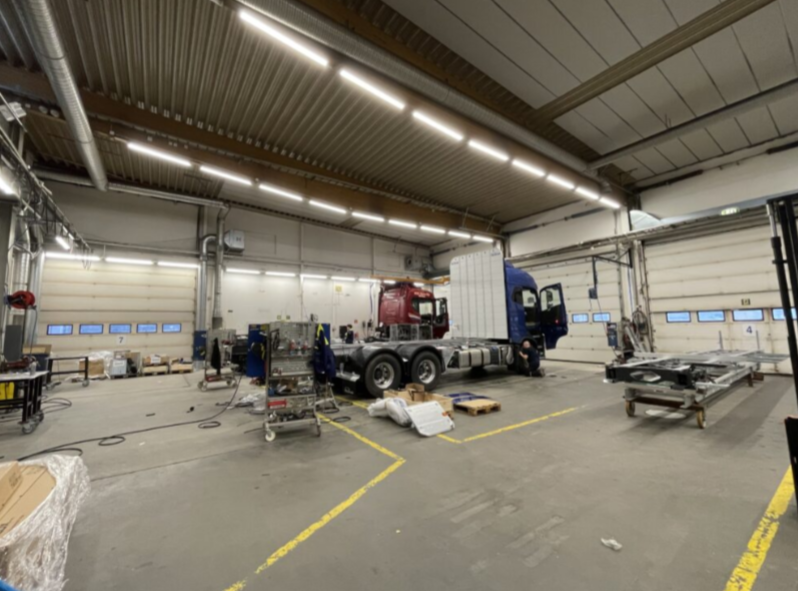What to consider?
When you’re considering purchasing new luminaires, preliminary estimates of the required illuminance levels and luminaire placement are created through lighting design. It is of utmost importance that the design takes into account the customer’s wishes and needs.
INDUSTRIAL SITE PLANNING
Creating good lighting for industrial sites requires the consideration of various planning factors and their application to the quality and precision of the work tobe performed as well as the prevailing conditions of the industrial site. Below are some points to consider when starting the planning process for an industrial site:
ILLUMINANCE LEVEL.
Often, industrial sites and processes have minimum illuminance levels specified. Illuminance level indicates the number of lumens falling on a square meter, measured in lux (LX). When discussing lighting designs and the objects to be lit, the conversation often revolves around achieving a certain number of lux. In this case, horizontal illuminance is usuallydiscussed, referring to the illumination of horizontal surfaces. However, verticalilluminance is also crucial, as work is often performed on vertical surfaces as well.
The visibility of details greatly depends on contrast, or, in other words, the difference in luminance between the object being illuminated and the background. The higher the contrast, the easier it is to see the details of the object being lit. However, human eyes are better suited to even lighting, so special attention should be paid to the uniformity of lighting.
GLARE.
Glare causes discomfort and impairs visibility. It can be caused by directly installed luminaires or indirectly through reflections on different surfaces. Glare occurs when the brightness of light exceeds what the human eye has adapted to see in its field of vision. Glare values should always be presented in lighting design or calculations when discussing illuminated objects. Glare can be prevented in various ways, such as:
LIGHT QUALITY.
There are countless luminaire and light source options available today, and, as a result, the quality of light varies widely. Customers should be aware that even in LED luminaires, light quality can vary. The difference between good and poor light is significant. The Color Rendering Index (CRI) somewhat indicates the quality of light used. The higher the CRI value, the more naturally different colors are reproduced. In simple terms, CRI = 100 corresponds to sunlight, and colors are reproduced naturally. The minimum requirement for industrial sites should be CRI > 80, as this can already eliminate some of the weaker luminaires. Good color rendering also helps detect deviations and improves work quality.
Flicker should also be considered. Nowadays, flicker-free options are available almost always and should be preferred. Flicker can potentially cause fatigue and irritation to the human eye. It is also possible that if the flicker frequency approaches the speed of a rotating machine, it can create an optical illusion that the machine is not rotating or rotating very slowly. This is always a safety risk.

CONSIDER.
Workplace safety is always influenced by the amount of light, and insufficient lighting is one of the main reasons for accidents in industrial facilities. A good lighting plan also takes into account challenging spaces with obstacles and other factors.
The suitability of luminaires to the prevailing environment is of utmost importance. If the location is demanding, choose luminaires designed for such environments.
Energy savings and LED luminaires have become almost standard. However, through lighting design, significant additional savings can be achieved by optimizing the number of luminaires for the customer.
Ease of installation is paramount. Downtime in production facilities is always to be minimized. Easy-to-install and long-lasting luminaires save time and money.
Anyone can create lighting plans, but it doesn’t mean that everyone knows how to create them effectively. Lighting design software can be downloaded from the internet, but using and applying it to a specific location is a different matter. Always ask for references when selecting a lighting designer for the site.
In hazardous areas/ATEX locations, always use experts in ATEX environments and products. Only luminaires suitable for explosive environments should be used in such areas. Product certifications, room design, and special requirements must always be taken into account in the implementation of the projects.